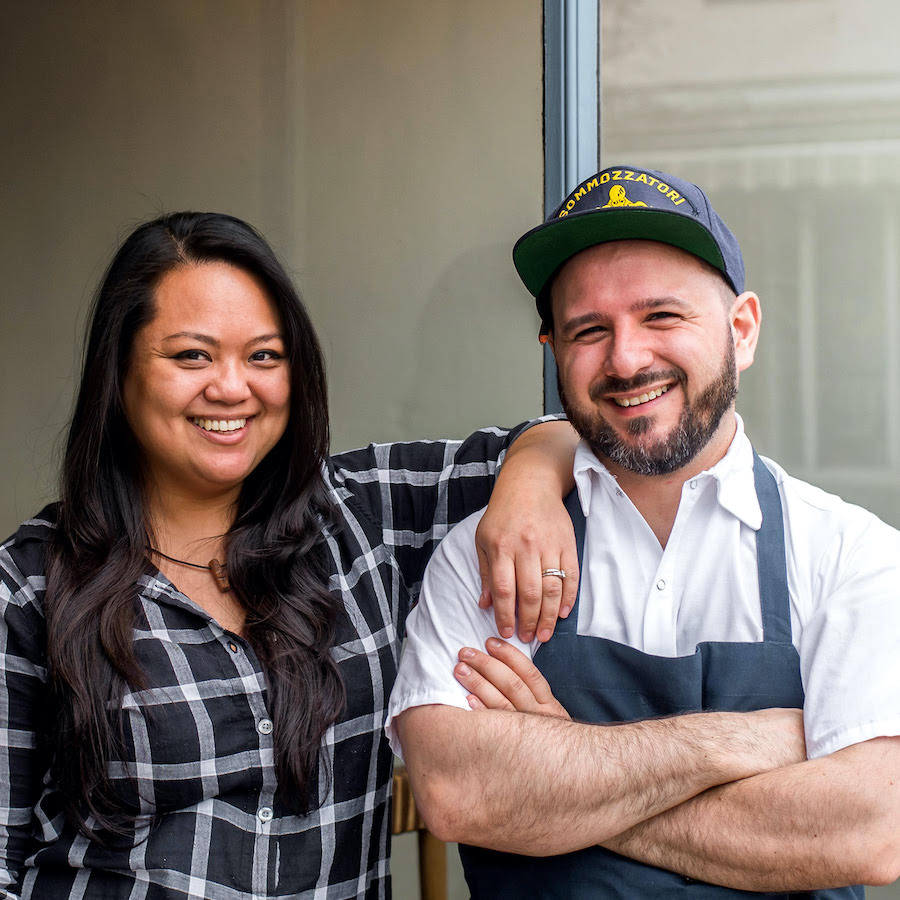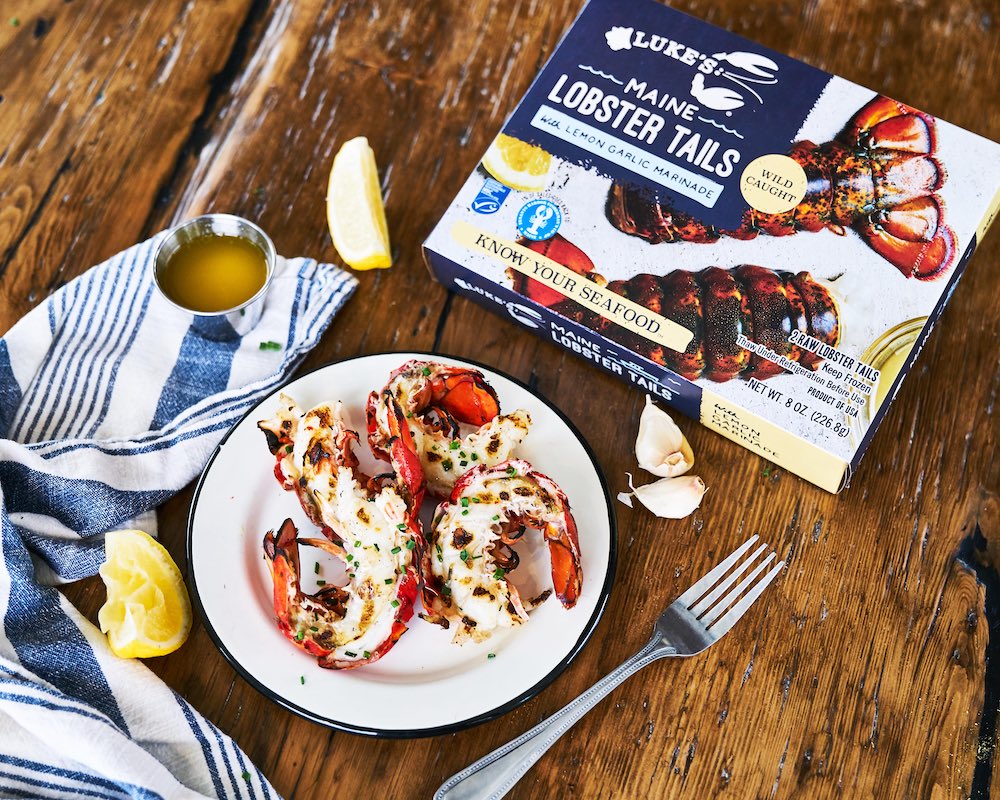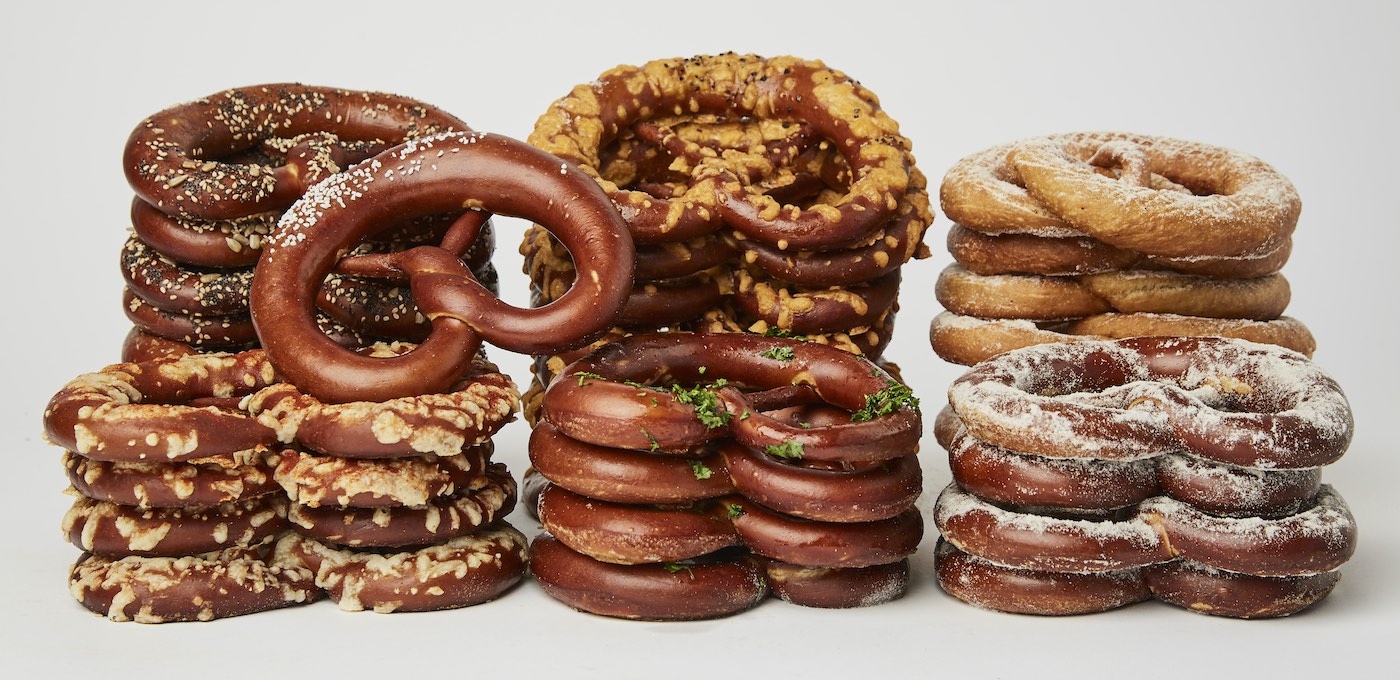
Restaurants Push through Pandemic Restraints with Retail Products
ICE alumni Lina Kulchinsky and Tony Scotto share their pretzel and pasta successes despite the circumstances.
Three entrepreneurs share how their food businesses have proven sustainable due to diversified revenue streams from online and in-store retail.
Before the coronavirus pandemic prevented restaurants and food brands from moving forward with any sense of normalcy, some chefs and restaurants were already set up for some form of success. Or at least some form of staying afloat.
While many restaurants have had to pivot from initial ideas and visions to evolved actualities, sometimes the alternative product or business model is an eventual asset. This holds true for Tony Scotto (Culinary, ‘03), who runs DPNB Pasta Shop with his wife Louidell Scotto in Nyack, New York.
“The original idea was to be a pasta-ramen bar, but the space we ended up finding in Nyack didn’t suit that so we pivoted to being a pasta shop with an extremely limited menu,” Tony says. “But then we expanded to this hybrid area, where the space was only 1,100-square-feet, most of which was not seating so we decided to maximize the revenue centers by retailing good beer and wine, fresh pasta, prosciutto, hot sauces and good coffee.”

He and his wife’s goal was to have a small grocery store, small restaurant and small retail space — as diverse and as profitable as possible. Everything that was on the shelves would make it into the dishes on the limited menu so DPNB would put its dry storage up for sale, something that many restaurants are trying to do now as a way to make money off what’s already purchased and in-house. For Tony, it was always a way to make more revenue, inspired by places like Court Street Grocers and Salumeria Rossi in New York.
As these revenue streams were set up at the inception of DPNB, it’s been a natural continuum during the pandemic. One big change he made at the outset of the crisis was discontinuing beer and alcohol service, or at least depleting the existing product and not ordering more. This has helped them stock only the product they know they’re going to sell. Items have been less financially lucrative since early March because of the alcohol exclusion, but adding things like pre-made meatballs, lasagna and roasted chicken to the menu to comfort people has paid off.
“We’ve had two rather prominent businesses close in town, and I think they are places that didn’t have the infrastructure we had or other revenue streams,” Tony says. “My wife and business partner did an exceptionally good job of setting up our site for online ordering and things that eliminate the phone conversation.”
Not that eliminating the phone conversation takes the personal connection out of the picture. For example, Mother’s Day was huge for DPNB with notes from customers at the bottom of orders thanking the team and saying how they couldn’t wait to order from DPNB again, something special that Tony says you don’t always get to see in the kitchen.
“We were lucky or fortunate or smart enough to have the infrastructure in place before this happened, and it’s about trust. People are going to come back to the places they trust and think are clean and providing good value,” he says.
Ben Conniff, co-founder and chief marketing officer at Luke’s Lobster, says his brand is in a similar position. In theory, Luke’s Lobster has 26 restaurants around the country but currently, 25 of them are closed. Founded in 2009, Luke’s restaurant business grew from the outset. As such, the company opened lobster production facilities in Maine and buys directly from lobstermen, distributing to itself. Over time, that led to a relationship with Whole Foods to sell lobster tails and eventually frozen lobster tails and frozen lobster meat.
“Before coronavirus, we were looking to continue growing our business with Whole Foods but then [with coronavirus] we were thrown into a state of thinking differently and doing things differently,” Ben says. “Whole Foods has stepped up and taken more of our existing products and other products from us that they wouldn’t have normally. We are in the process of getting a few more dishes added and going out to new grocery accounts.”

Luke’s rapidly launched a direct-to-consumer website, which has helped the team send lobster and fish to regular customers and find untapped demand among other audiences in all 48 continental states, as opposed to just metro areas around restaurant locations.
“It hasn’t replaced the lost revenue and profit from 25 restaurants but it has helped keep the team going and it’s helped us continue buying from the fishermen and get their products to a wider audience,” Ben says. “We can also diversify. The first example is dayboat scallops, which we don’t serve in our restaurants. But we could get them to people from our website at the beginning of the season and we plan to launch halibut in halibut season.”
This isn’t just a way to help Luke’s Lobster survive right now; it’s a long-term addition to the company. Under the extreme circumstances, the team mobilized quickly and gets a little better every day.
Similar to DPNB, Luke’s saw a huge lift around Mother’s Day, an exciting sign that maybe every week and every month the business could expand. For Memorial Day, Luke’s is offering a special pack with two lobster tails, lemon-garlic marinade and Maine chocolate-covered potato chips. The company also hopes to build out more with the site and experience by creating instructional videos with Maine chefs, including James Beard Award winners and nominees.
“Cooking with our product is one thing people can do to enrich their existence right now,” Ben says. “We’re looking to be a resource for people to understand how simple it can be to use their time at home to learn a new craft, which is cooking sustainable seafood. Seventy percent of seafood in America is consumed in restaurants so we feel a great responsibility to get that seafood into people’s hands.”
Lina Kulchinsky (Pastry, '07) is in a similar season of expansion. She founded Sigmund’s Pretzels in 2009 hoping to be an upscale version of Auntie Anne’s. A retail space for a bar and bakery worked for a while but then turned into an opportunity for business elsewhere: sharing pretzels with other bars and bakeries and then bigger companies like Madison Square Garden, airports, offices and even at events like weddings. In 2017 and 2018, Lina started to explore what e-commerce looked like for a perishable product like pretzels.

“We did have a partner in Goldbelly, and it’s been pretty exciting since they’ve helped us during this time with about 400 to 500 orders in the past six weeks, which is even more than what we do in December, what’s usually our biggest month because of holidays,” she says.
It’s pretty serendipitous considering Lina thought she’d have to postpone everything until she was able to rally workers who could drive to the bakery safely without needing to risk their health on public transportation.
“I’m glad we didn’t stop because we had to completely rework how we do fulfillment, and it was pretty cool. We learned a lot and we all realized that having a direct-to-consumer channel outside of your local channel is something you have to have in the mix,” she says.
Now she’s considering a line extension like mustards and a pretzel chip that’s shelf-stable and easier to ship.
“Things are going to be slow for a while. It’s doable, but it’s definitely tricky and also an exciting development,” she says. “It’s not clear if we’re going to be able to pivot fast enough but I’m excited.”
Develop your food business idea with strategies like diverse revenue streams in Restaurant & Culinary Management.


Add new comment